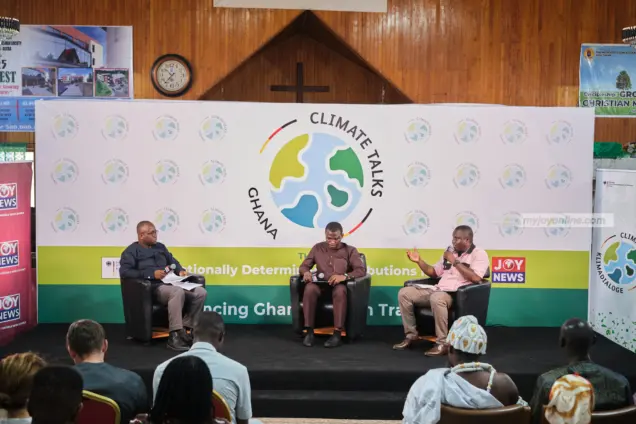Ghana’s energy sector is at a crossroads, grappling with persistent power shortages that stifle economic growth. For practitioners seeking sustainable solutions, solar energy emerges as a beacon of hope, contingent upon the strategic implementation of effective financial mechanisms. This guide delves into the financial dimensions of Ghana’s solar energy transition, drawing upon insights from the International Energy Agency (IEA), the African Development Bank (AfDB), and successful local initiatives. A deep understanding of these financial pathways is not just beneficial, it’s crucial for unlocking Ghana’s vast solar potential and fostering lasting economic prosperity. This means taking into account the long-term economic impact.
The path to a solar-powered future begins with acknowledging the present challenges.
Ghana’s reliance on hydroelectric power and fossil fuels leaves it vulnerable to volatile global price fluctuations. The infamous “Dumsor” crisis of 2014, a period of prolonged and crippling power outages, starkly illustrated the fragility of Ghana’s energy infrastructure. According to the Ghana Energy Commission, hydro sources currently account for 38% and natural gas for 55% of the nation’s electricity generation, highlighting the urgent need for diversification.
Globally, the solar energy sector is experiencing exponential growth. The IEA reports that solar energy accounted for nearly 3% of global electricity generation in 2021 and projects an impressive annual growth rate of 17% until 2030. Africa, blessed with immense solar potential estimated at 10 terawatts, currently accounts for a mere 1% of global capacity. Ghana benefits from an average solar irradiance of 4 to 6 kWh/m²/day, making it an ideal location for solar energy development.
The economic impact of these power outages cannot be overstated. The African Development Bank (AfDB) estimated in 2019 that power outages cost the Ghanaian economy approximately 2% of its GDP annually, underscoring the compelling economic rationale for investing in reliable and sustainable solar energy solutions. This is something the practitioners need to keep in mind.
Overcoming the high upfront costs of solar installations requires innovative financial approaches. Concessional loans, green bonds, and public-private partnerships (PPPs) are emerging as vital tools for unlocking solar projects. This will require the banking sector and governmental support.
Established in 2020, the Ghana Renewable Energy Fund stands as a testament to this commitment, allocating $200 million in concessional loans to solar projects as of 2023. The banking sector can further stimulate growth by offering reduced-interest loans, lease-to-own models, and strategic partnerships with certified solar vendors. For example, Stanbic Bank introduced a solar energy finance product in 2024 with flexible repayment terms designed to alleviate the financial burden on consumers and businesses.
Net metering, which enables consumers to sell excess electricity back to the grid, further enhances the financial viability of solar energy investments. This encourages individual participation in the solar ecosystem, making it a more inclusive and sustainable energy solution.
Currently, Ghana imports a significant portion of its solar panels, contributing to higher costs. Developing a robust local solar manufacturing industry presents a strategic opportunity to reduce costs, create jobs, and cultivate local technical expertise.
Recognizing this potential, the Ghana Investment Promotion Centre (GIPC) announced tax incentives in 2022 specifically designed to attract companies involved in renewable energy manufacturing. This strategic move aims to foster local production and reduce reliance on imports. According to data from the International Renewable Energy Agency (IRENA), the renewable energy sector could generate over 10,000 jobs in Ghana by 2030. Investing in local assembly plants and comprehensive training programs will be critical to realizing this job creation potential.
Ghana’s solar energy ambitions require substantial capital and technical expertise, necessitating strong international partnerships. Developed nations have pledged billions in climate finance to support developing countries in their transition to renewable energy.
The World Bank’s Scaling Solar initiative offers a proven blueprint for developing large-scale solar projects, drawing on successful examples from Zambia and Senegal. A landmark agreement was signed between Ghana and the World Bank in 2023, committing $500 million to support renewable energy development. The overarching goal is to generate 10% of Ghana’s electricity from renewable sources by 2030, marking a significant step towards a sustainable energy future. The impact from the agreement will require practitioners to be ready to manage the increased demand and projects that come from it.
Solar energy holds immense promise for Ghana, offering a pathway to sustainable economic growth and environmental stewardship. Realizing this potential hinges on coordinated efforts from policymakers, financial institutions, and international partners. The banking sector, in particular, plays a pivotal role through the provision of innovative financing solutions tailored to the unique needs of solar projects. With the right policies and incentives in place, Ghana can emerge as a leader in Africa’s renewable energy transition, transforming solar energy from a promising concept into a cornerstone of national development.
Image Source: MYJOYONLINE




















